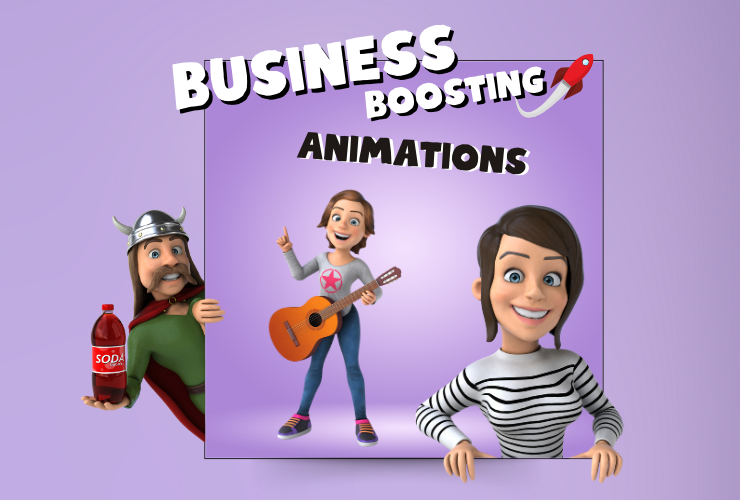The 4 Pillars of Content Writing
Who doesn’t want to be famous through their writing? Is that too easy peasy?
Absolutely! Just you need a well-decorated and strategic roadmap toward your goal. Success lies in how much you know the term. Outstretched content must be an informative piece of writing. Once you fully understand your topic, it's time to draft the article. Edit the content for grammar and spelling mistakes. Finally, publish the article on your website or blog and track online traffic to see if it was successful.
To be a successful content creator, it’s needed to make the base of writing stronger enough to withstand any thunderstorms like cyberbullying and bans from other sites. In our blog, we’re going to mention the 4 pillars of content writing, one can use for making standard content: analysis, aligning, revising, and disclosing.
If you want your content to be successful, make sure you adhere to the four pillars of quality writing. Good content requires thorough research, careful drafting, careful editing, and eventual publication. If you follow these steps correctly, you will produce high-quality content that will resonate with your audience.
Our Discussions
-
Introduction.
-
Content Writing and Its Variations.
-
What Skills Are Needed to Become a Content Writer?
-
The 4 Pillars of Content Writing?
-
The Common Mistakes to Avoid in Content Writing.
-
The Bottom Line.
Characteristics of Content Writing
Content writing is a knack and is often known as the tone of a brand. However, successful writing covers many details which need to be known inside out or adjusted regularly. Not only do you grasp divergent facets of anything. But also disclose routes that increase your knowledge and create you're writing more fluent.
You can notice so many creators and professionals forwarding to “find your niche”. And that resonates stunningly when you are posting for a niche.
It's all faithful, but only if you realize what you're writing.
Content for the aim of the content is clear fatuity. It needs well-set tricks to drive a fluent content-creation process that takes you to the path to success. There's something to be said for creating content that resonates with the audience. Effective content marketing not only boosts brand awareness but also helps to convert visitors into leads and customers. And that's where the art of content writing comes in.
So what is content writing, and how should it be done? Essentially, it's the act of crafting text that resonates with your target audience and drives conversions to your desired outcomes. But this is no easy task.
In a world where everyone is constantly on the go, it seems like people have lost touch with one of life's fundamental principles: engagement. Too often, we see headlines that scream "FREE" but inside are ads you have to click through or videos you have to watch. In an age where people naturally scroll past ads and distractions, engaging content has become even more important for brands and businesses looking to stand out from the crowd.
Effective content marketing starts with effective writing. If you want people to read, understand, and act upon your material, you need to invest time in honing your skills as a writer. Several different types of writing can improve the effectiveness of your online presence - let's take a look at each one in detail.
-
Blog post: It’s a kind of article containing some piece of information, guidelines, and comparisons with some visual impacts. The more one can make a blog epic, the easier to get the attraction. It’s a known content with the ability to grow business effectively at a low cost. A report claimed that a blog post impacts 6% of sales, and the number doubled by 12% in the brand post regularly for a year.
-
Social media post: It’s a type of short informative content that contains images, videos, links, and charts and publishes on social media platforms like Facebook, Twitter, LinkedIn, and other similar platforms. 85% of audiences trigger through social media posts.
-
Sales copywriting: Sales copy motives to get a viewer to take hold of a specific initiative to buy a product or inquire about, download a free article, or start to follow on social media. It applies to emails, web pages, or sales booklets.
-
Infographics: It’s a combination of text and visual content. Think about something different and spicy. Now give a visual representation. It’ll be more attractive for the viewers. Suppose you can make a comparison sheet of a trending topic like the Apple iPhone 14 or Google Pixel7, which is better. Try it and look at your stack and continue reading. That's how it works.
-
Ebooks: It is an appreciative and technical way to offer an in-depth observation of any topic. It’s a great educational aid and can assist to convert from potentiality to reality. But one should be careful with the vocabulary to make it readable and understandable for the readers.
-
White Papers: White papers are near to ebooks as they are extended forms that must be educational and dig into subjects. However, it helps you to set a strong root for your writing.
-
User Guides and How-To's: It’s a type of interacting content. That contains a purpose, guidelines, instruction, and reviews, and also showcases some case studies. As well as ask for the reaction of the reader.
-
SEO content: That form of SEO content writing stimulates the search engine reach. The contents should be user-friendly and relevant to the topic. The topic must have enough relativity and authenticity.
What Skills Are Needed to Become a Content Writer?
As a web writer, you must understand how to create engaging, compelling content that will get people hooked.
To create effective content, it is needed to follow some key rules: be clear, concise, and interesting. By following these guidelines, you will be able to write content that is both informative and useful. You won’t need to worry about whether or not your content will interest readers – they will be drawn in by the strong pull of eye-catching facts and engaging narratives.
The following skills will help you to become a content writer, and you may create more attractive content that will encourage readers to click through to your website.
-
Know your audiences.
-
Select a suitable tone and voice.
-
Understand key writing practices.
-
Present a charming story.
-
Be Social Media Savvy.
-
Know the basics of SEO.
-
Research deeply.
-
Stay up to date & Open to Change.
-
Be organized.
-
Focus on editing and revising.
-
Active in solving problems.
The 4 Pillars of Content Writing?
Are you tired of writing the same articles repeatedly? Have you ever thought about how to write content that is both interesting and convincing? You must follow the main bases of content writing. Including audience, structure, tone, and promotion.
Here check out these 4 in detail
Audience: The First Pillar of Content Writing
What is the purpose of your content? The only answer is to grab the audience or satisfy readers. The main thing is the audience.
Only when the audience hits your blog and spends more time reading then you get a rank in the search engine. It's essential to understand who your target readers are and what their needs and interests are.
Before you begin writing, you ask yourself some questions such as: Who is my intended audience? What are their demographics? What are their interests and needs? Are they in touch with the topic?
Once you fully understand your audience, you can tailor your content to meet their needs and expectations. For example, if your audience is mainly professionals, you will want to use a more formal tone and industry-specific terms. On the other hand, if your audience is students, you may want to use a more casual tone and simplify complex concepts.
Knowing your audience also helps you determine the structure and format of your content.
For instance, if your audience is primarily visual learners, you may want to include more images and infographics in your content. If your audience is busy, you need to use shorter paragraphs and bullet points to make the content more scannable.
Structure: The Second Pillar of the Content Writing
Product showdown is one of the initial motives of the whole work. The more you narrow the topic, the more you attract the viewer. Try to focus on the main point and give a complete list of strategies, tools, ultimate guidelines, link-building, and many more.
-
A suitable template for specific content will give detailed information with a topic, subtopic, body, and conclusion.
-
Subtopics will play a vital role. Relevant queries will hide here.
-
Creating a content calendar includes the topic key element, editorial, platform, promotional, and future ideas.
-
Select the proper content type like a blog post, product page, category page, and landing page.
-
Find the appropriate content format as a how-to guide, step-by-step tutorials, reviews, and comparisons.
-
Try to use the AIDA formula.
-
Avoid big words.
-
Find research reports on the content. Try to mention the percentages and statistics.
-
Make slippery slides with short sentences.
Tone: The Third Pillar of Content Writing
Tragic, evergreen, controversial content can grab a high chance of huge reach of the post. Select the perfect tone for the content keeping in the head the reaction of readers.
Try to leave a question in the subtopic for making the audience read more.
Resource collection leaves a strong view of your writing.
Creating a deadline or mentioning a specific period can make a topic more readable.
Mentioning reviews create a strong impression on the reader. You can mention the consequence of before, after, and what the review is! It’ll be appreciated if you use a testimonial.
Try to find the effectiveness. Better to use an integer instead of a real number. It’ll be more visible to the viewer. One can stack eyes on 68.4 rather than 68.
Avoid temporary popular keyboards.
Promotion: The Fourth Pillar of Content Writing
In a competitive world where customers are more choosy than ever, your content must be top-notch to keep them engaged. The Fourth Pillar of Content Writing is all about ensuring that your content is not just informative but engaging as well. What are some strategies you can use to promote your content?
Four key objectives must be met for content to be successful: informing, entertaining, persuading, and supporting. Each pillar requires a different set of promotional strategies for it to reach its full potential.
The Common Mistakes to Avoid in Content Writing
Content is one of the most critical factors of a site. It is the foundation on which all else rests. If your content is weak, your visitors are likely to leave your site without taking any action – no leads, no sales, nothing. There’re some mistakes to avoid in content writing for better results
-
The most common mistakes in content writing are poor grammar and spelling errors. These can make your content difficult to read and may reflect poorly on your credibility.
-
Writing that is unclear or difficult to follow can leave readers confused and frustrated. Be sure to write clearly and concisely so it is easy to understand.
-
Rules of traffic direct us to drive safer and faster. We can be able to predict what others are going to do. We understand when our turn is to overtake safely.
-
Writing contents are close to this role. They need to avoid confusion, so readers can realize their ideas without any confusion.
-
It's easy to fall into the trap of using big words and complex sentence structures to attempt to sound more intelligent. However, this can make your writing difficult to read and may alienate your audience.
-
Failing to research your topic thoroughly can result in inaccurate or incomplete information. Always take the time to conduct thorough research before writing on a new topic.
-
Plagiarism is an offense and can result in legal action. Always ensure your content is original and cited if you reference outside sources.
-
Using too much content writing industry jargon can make your writing difficult to understand for those outside your field. Try to involve easy words.
-
A lack of proper editing can make your content errorful. Keep calm and take time while editing. Review your copies again and again.
The Bottom Line
Writing is a kind of indirect way to connect directly with readers. It’s a proper and healthy way to connect in a systematic way with your clients. Resourceful content isn’t only a blog but an educational source.






